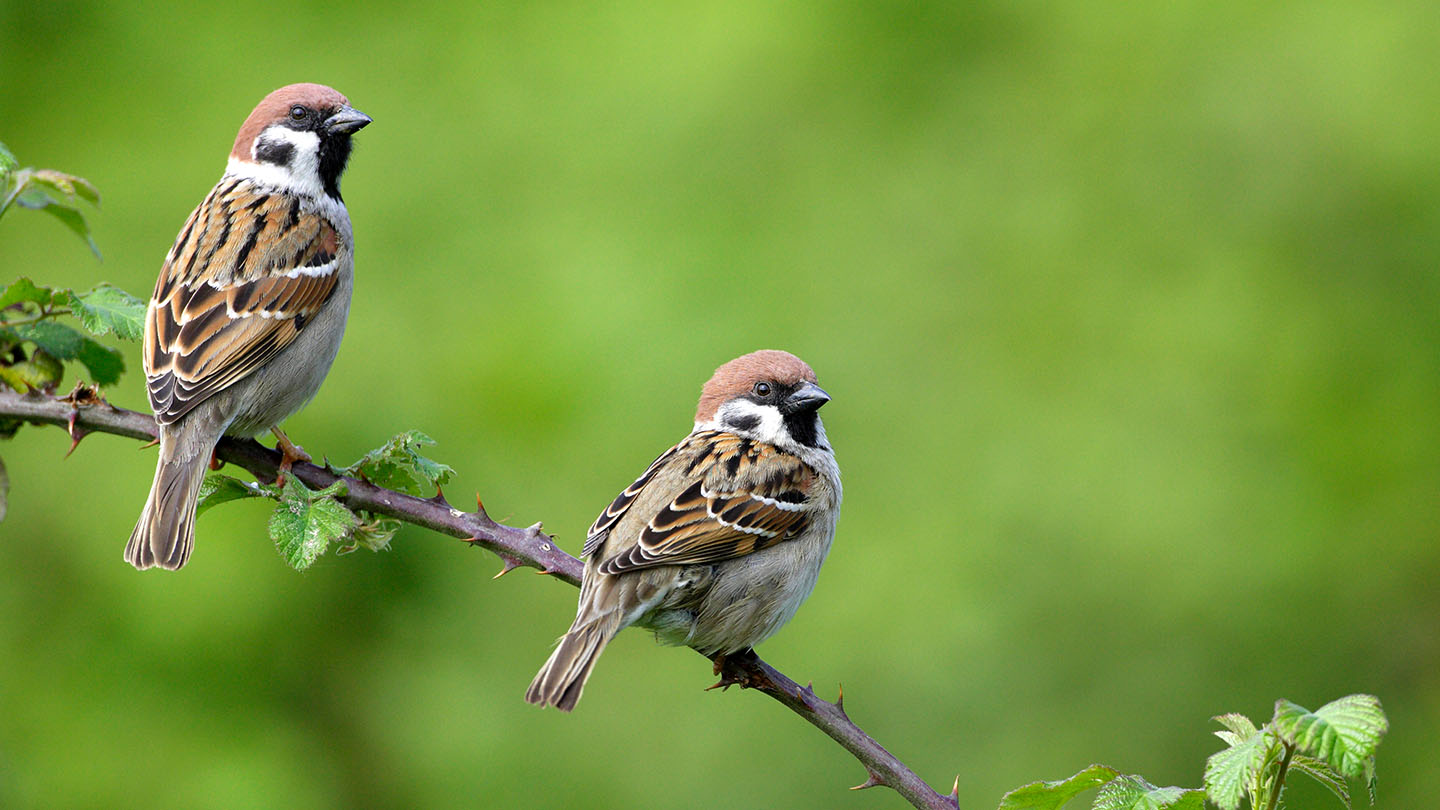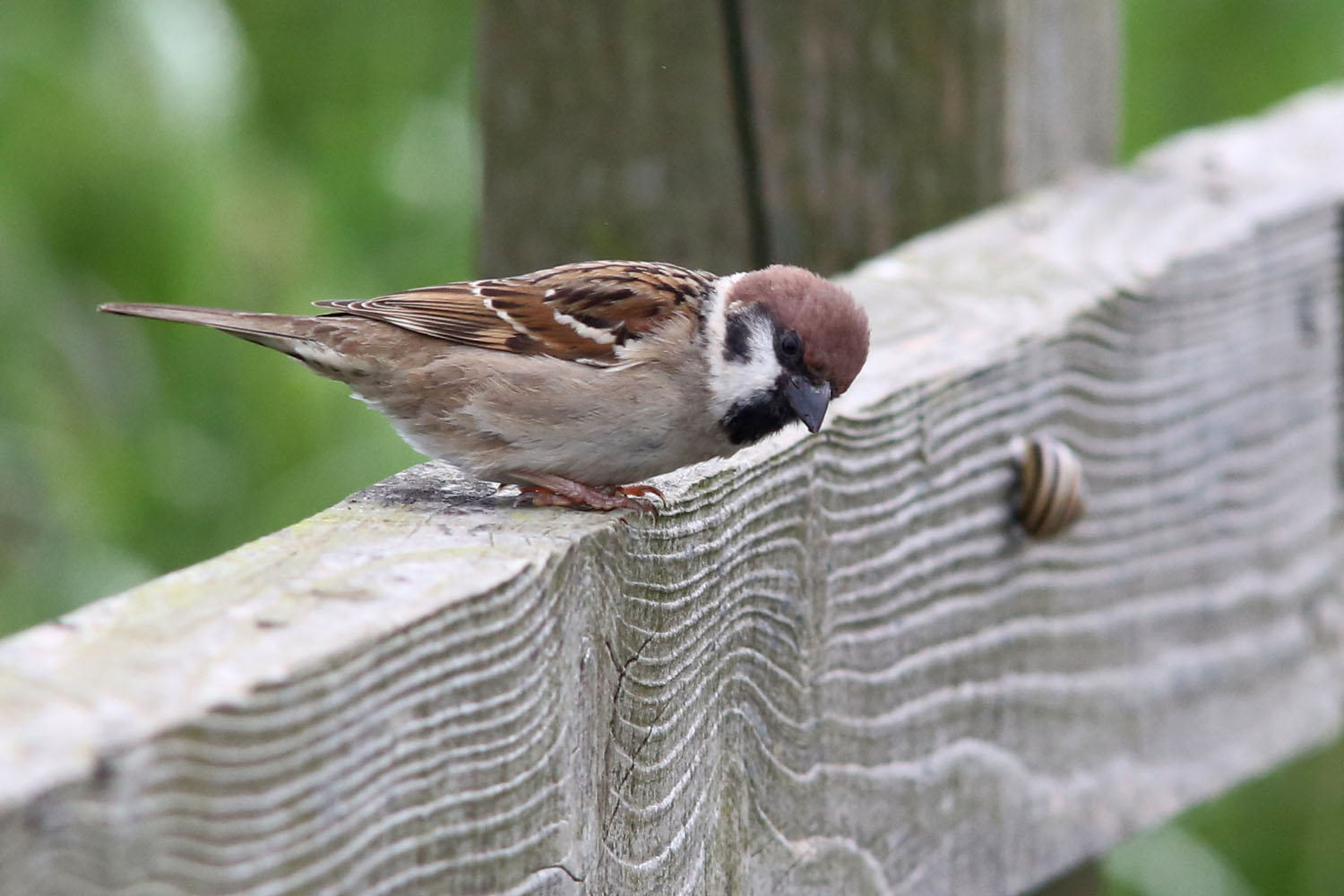


Within its limited US range, the Eurasian Tree Sparrow has to compete with the House Sparrow in urban centres, and is therefore mainly found in parks, farms and rural woods. These sparrows are descended from 12 birds imported from Germany and released in late April 1870 as part of a project to enhance the native North American avifauna. Louis and neighbouring parts of Illinois and southeastern Iowa. In North America, a population of about 15,000 birds has become established around St.

This sparrow has occurred as a natural vagrant to Gibraltar, Tunisia, Algeria, Egypt, Israel, and Dubai. It was introduced successfully to Sardinia, eastern Indonesia, the Philippines and Micronesia, but introductions to New Zealand and Bermuda did not take root. The Eurasian Tree Sparrow has been introduced outside its native range, but has not always become established, possibly due to competition with the House Sparrow. dilutus reaches coastal Pakistan in winter and thousands of birds of this race move through eastern China in autumn. It is sedentary over most of its extensive range, but northernmost breeding populations migrate south for the winter, and small numbers leave southern Europe for North Africa and the Middle East. In South Asia it is found mainly in the temperate zone. It formerly bred in the Faroes, Malta and Gozo. The Eurasian Tree Sparrow's natural breeding range comprises most of temperate Europe and Asia south of about latitude 68°N (north of this the summers are too cold, with July average temperatures below 12 ☌) and through Southeast Asia to Java and Bali. Is one of those MUST visit pages if you're in to bird watching. In eastern Asia and western Australia, this species is sometimes viewed as a pest, although it is also widely celebrated in oriental art. The Eurasian Tree Sparrow's extensive range and large population ensure that it is not endangered globally, but there have been large declines in western European populations, in part due to changes in farming practices involving increased use of herbicides and loss of winter stubble fields. The Eurasian Tree Sparrow is widespread in the towns and cities of eastern Asia, but in Europe it is a bird of lightly wooded open countryside, with the House Sparrow breeding in the more urban areas. This sparrow feeds mainly on seeds, but invertebrates are also consumed, particularly during the breeding season.Īs with other small birds, infection by parasites and diseases, and predation by birds of prey take their toll, and the typical life span is about two years. The typical clutch is five or six eggs which hatch in under two weeks. The Eurasian Tree Sparrow's untidy nest is built in a natural cavity, a hole in a building or the large nest of a European Magpie or white stork.

This sparrow breeds over most of temperate Eurasia and Southeast Asia, where it is known as the Tree Sparrow, and it has been introduced elsewhere including the United States, where it is known as the Eurasian Tree Sparrow or German sparrow to differentiate it from the native unrelated American Tree Sparrow.Īlthough several subspecies are recognised, the appearance of this bird varies little across its extensive range. The sexes are similarly plumaged, and young birds are a duller version of the adult.
#Tree sparrow Patch#
The Eurasian Tree Sparrow (Passer montanus) - Called Pilfink in Skåne - is a passerine bird in the sparrow family with a rich chestnut crown and nape, and a black patch on each pure white cheek.


 0 kommentar(er)
0 kommentar(er)
